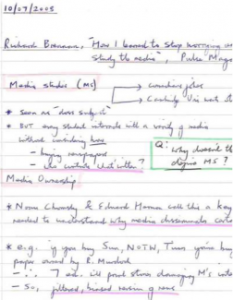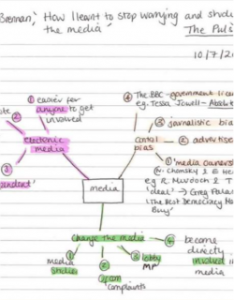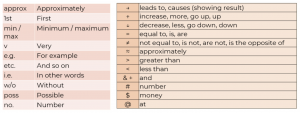Notes help you to actively engage with the topic by processing the information you are hearing or reading in order to take it down.
This means you stay more focussed, retain and remember information better, and make connections between the ideas.
Once you have your notes, they enable you to save time when reviewing the course content, paraphrase more easily, avoiding plagiarism, and therefore you can use them in your assignments.
Before class, read materials on VLE
Check out these programmes to see which you like using best.

(Burns and Sinfield, 2016)

(Sussex University, 2020)
These save time and space and are quick and easy to read. However, use them consistently so that you can always understand your notes when you read them later.

Burns, T. and Sinfield, S. (2016) Essential study skills: the complete guide to success at university. 4th edn. London, Sage.
EAP Foundation (2020) Using Symbols & Abbreviations (Accessed 12 August 2020).
Sussex University (2020) Note-making Styles (Accessed 12 August 2020).
